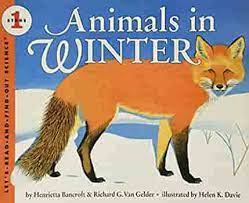This is a clear and appealing book for early elementary-age kids, both at home and in the classroom. Introduce kids to basic science ideas as part of discussions about the seasons and animals. Have you ever seen a butterfly in the snow? Probably not. Butterflies can’t survive cold weather, so when winter comes, many butterflies fly to warmer places. They migrate. Woodchucks don’t like cold weather either, but they don’t migrate; they hibernate. Woodchucks sleep in their dens all winter long. How do these and other animals handle the cold and snow of winter?
This informative winter-themed book can be used in speech therapy to address various grammar concepts such as regular plurals and present tense verbs. It is also great for targeting vocabulary! Discover more of the speech and language teaching concepts for using Animals in Winter in speech therapy below:



